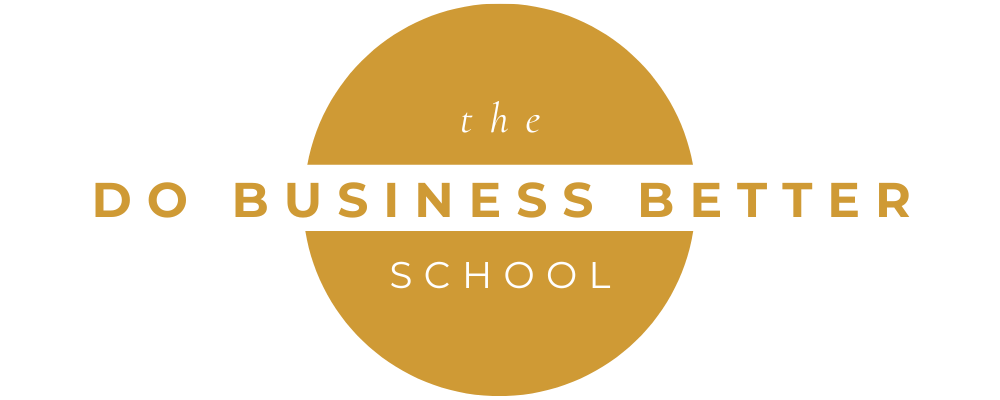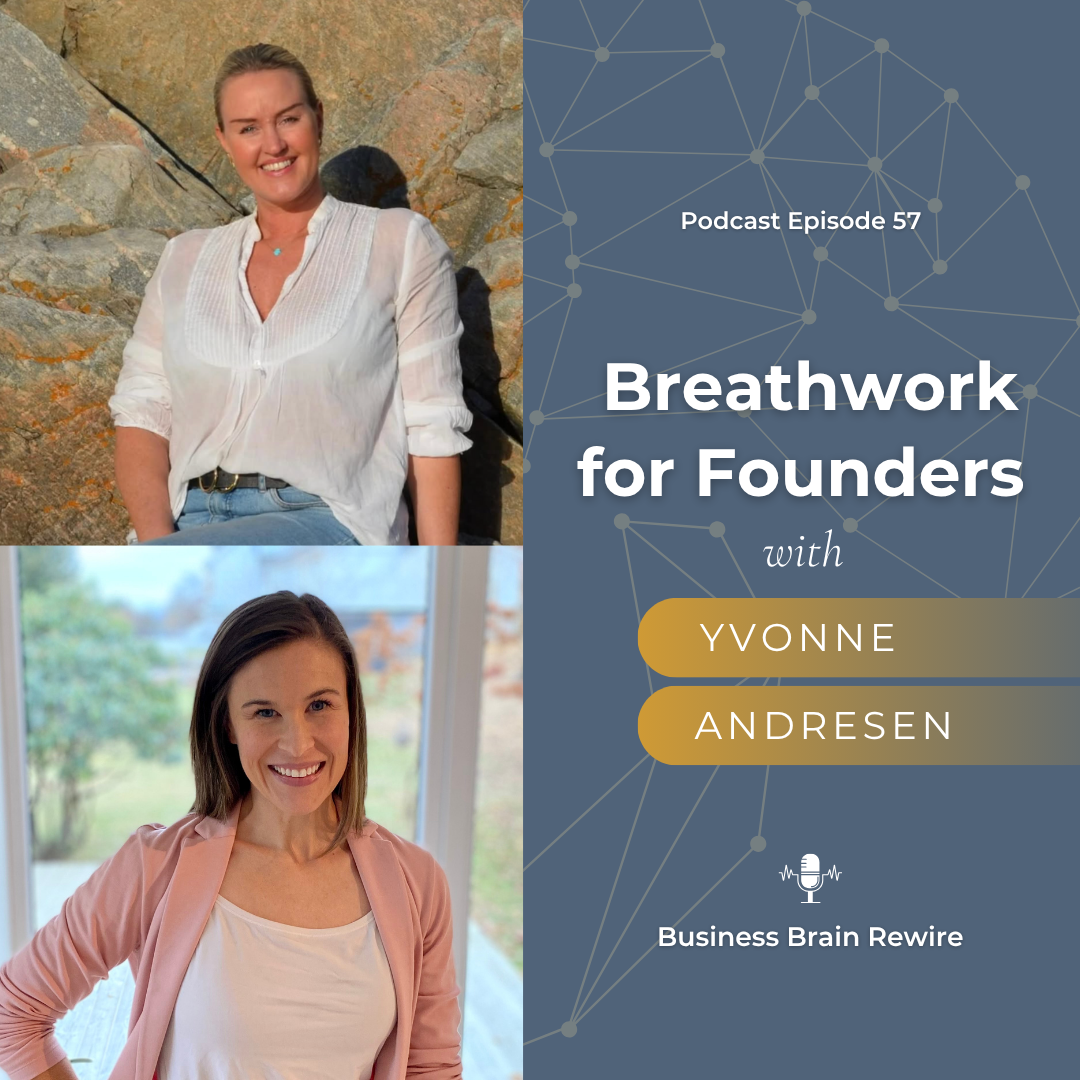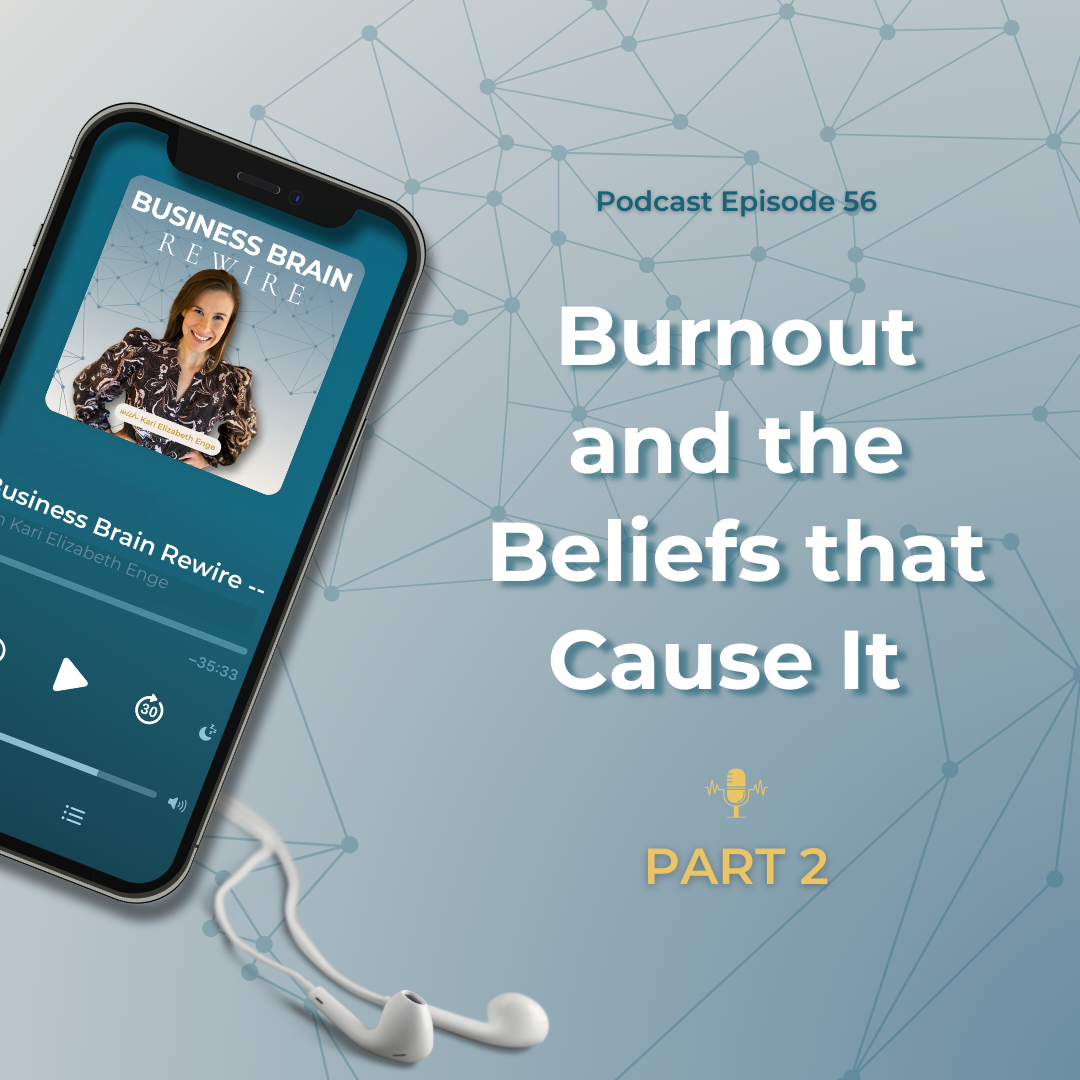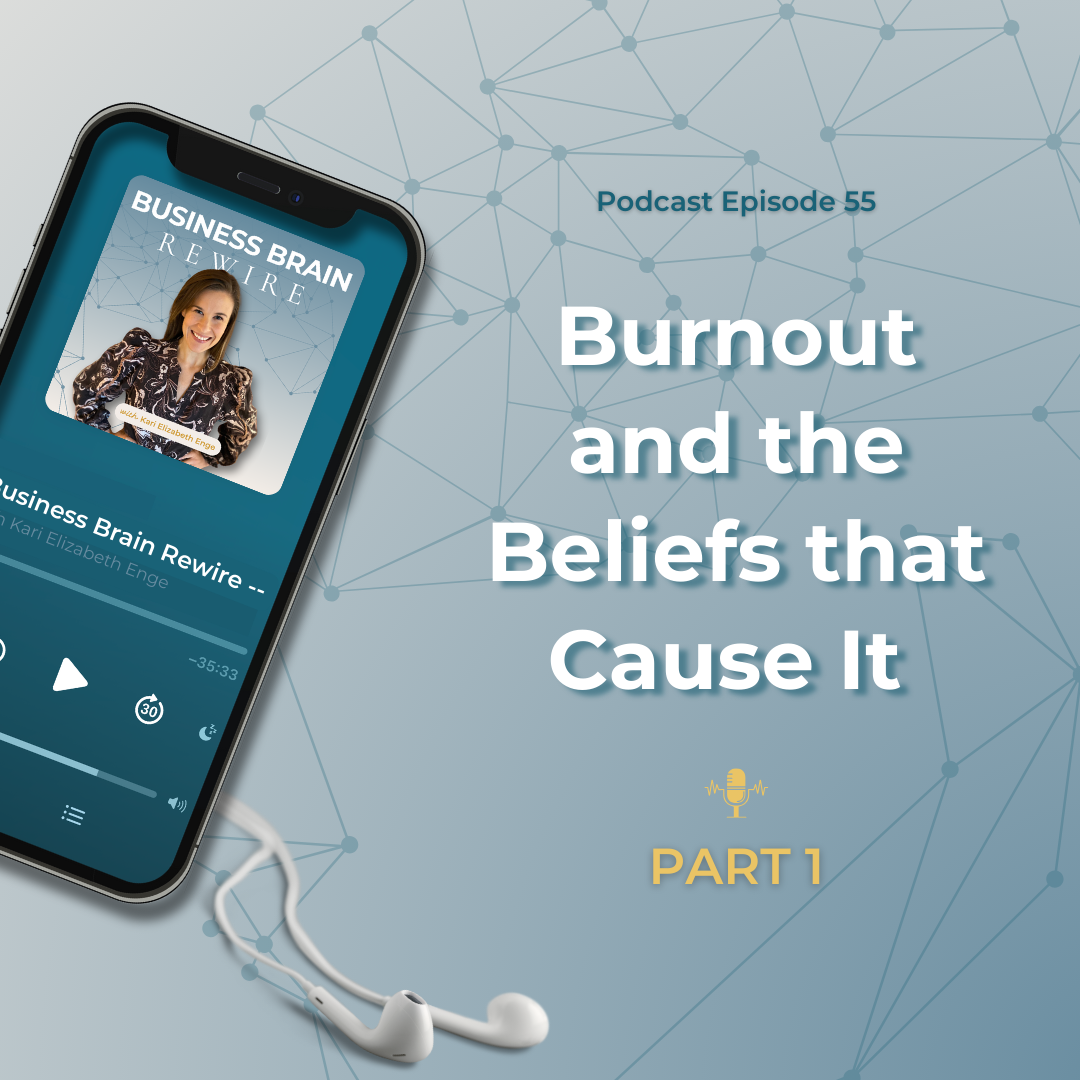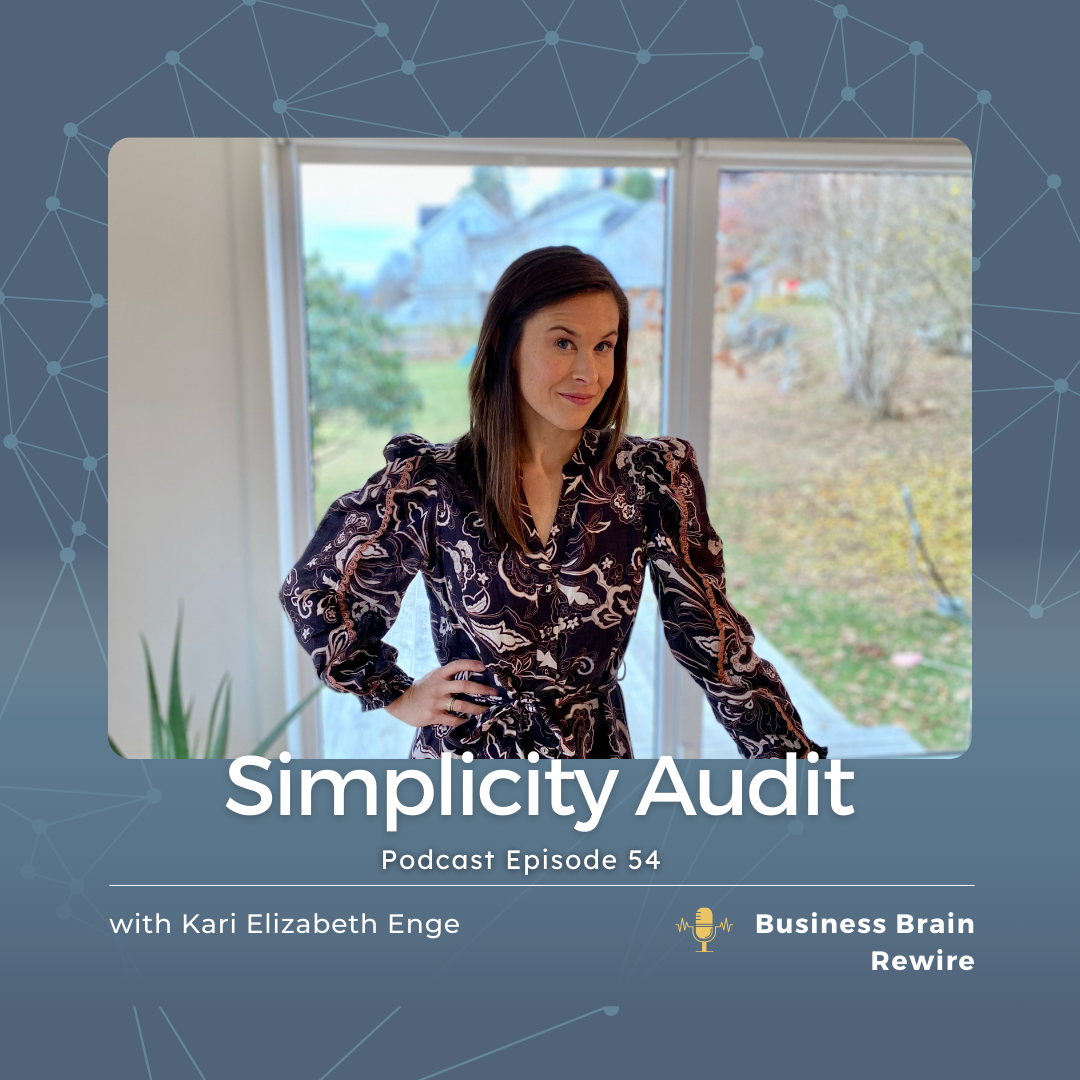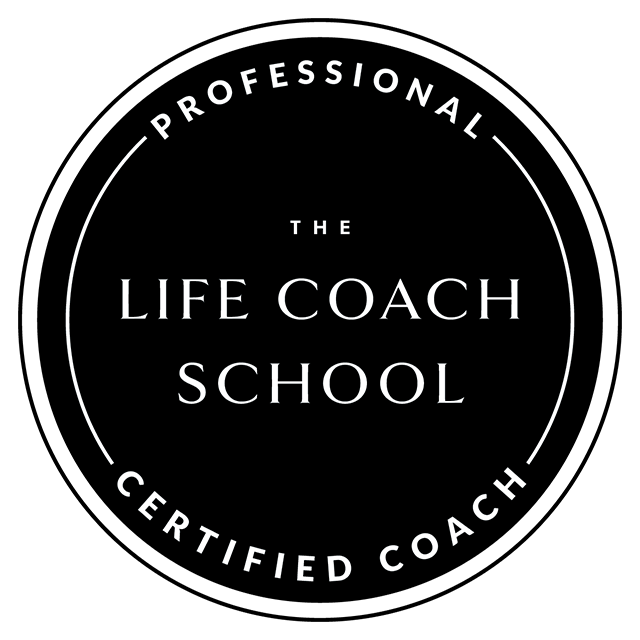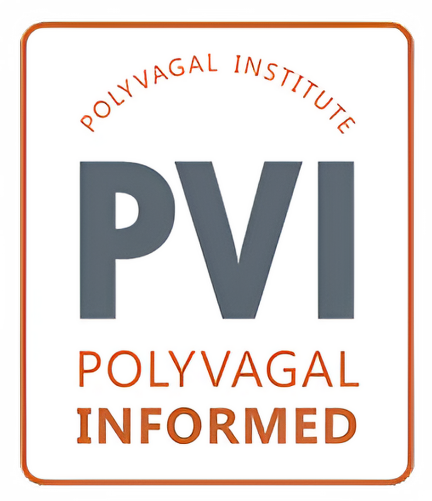You can double your revenue while cutting you to-do list and stress in half. But you have to get rid of traditional approaches to managing your time.
This isn’t just about getting more things done in less time; it’s about understanding neuroscience so that your business model can be decluttered, and rethinking the way you use your personal time off to FUEL business growth.
Let’s dive into how to transform your calendar into a powerful tool for achieving your business and personal goals at the same time.
The Power of Planning Ahead
One fundamental rule is to always create your calendar structure ahead of time. This proactive approach allows you to focus on achieving significant results in a couple of strategic categories. I call these your “Essentials.”
Instead of filling your calendar with every task that pops up, dedicate specific time blocks to the essential categories that you want to drive your business forward with this season.
Task Orientation vs. Results Orientation
In episode 13 of Business Brain Rewire, we discussed the importance of being results-oriented rather than task-oriented. Your calendar should reflect this mindset. Don’t focus on the number of tasks you can cram into a day, but on the significant, high-impact Essentials that propel your business toward your goals.
Leveraging Parkinson’s Law
Parkinson’s Law states that work expands to fill the time available. If you allocate three hours for a task, it will take three hours. By setting strict time limits and creating well-defined time blocks in your calendar, you can improve efficiency and reduce stress.
But here’s the most important part of this Law. Instead of using the saved time for MORE business tasks, use the extra time for rest and recovery, which is crucial for maintaining peak performance.
Incorporating Rest and Recovery
Reaching your goals is about remembering the neuroscience-truth that rest and recovery maximize your results. Schedule regular breaks and activities INSIDE your work day that help you recharge, such as walks, stretching or a quick meditation. This approach keeps your central nervous system regulated and enhances creativity and problem-solving abilities.
Transforming your calendar into a strategic CEO tool will significantly impact your business success and personal life. Remember, it’s not about being busy; it’s about being effective. Plan ahead, focus on results, apply Parkinson’s Law, and ensure you have ample time for rest and recovery. By doing so, you’ll not only achieve your business goals but also maintain your well-being.
In This Episode, You’ll Learn:
- The calendar structure I suggest for all founders who want to double revenue while cutting stress in half
- The neuroscience of why personal space, rest, and recovery is important for achieving business results
- How to apply Parkinson’s Law to improve efficiency and lower stress
Mentioned in Today’s Episode:
Increase sales and lower stress using DBB’s proven CEO System by learning more about the Simply Sustainable coaching program for purpose-driven founders.
The program launches on September 10th with a special promotion for founding members until September 20th. Sign up early here and score exclusive bonuses!
Find more info on Instagram @DoBusinessBetterSchool and check the show notes for signup options.
Transcript
[00:00:00] Hey founder, I want to let you in on a little secret before we get started in today’s episode. So pull over, turn off the car, stop cooking dinner, get out of the shower, whatever you need to do, grab a pen and write down. Just scribble a little note, Kari’s new program, Simply Sustainable, launching September 10th.
[00:01:08] And then make sure you put a little asterisk by that and write September 10th through September 20th, promotion for founding members. What that means is I created a course and a group coaching program for you and I cannot wait for you to be there and because of that I have created a special bonus and a gift for you when you sign up in the first couple days. The group program is open. So if you want more information if you can’t wait to join or if you’re just curious come join the waitlist. This is very important so that you don’t miss out on that promotional period. Because listen, if you email me a couple of days later and say you missed it, I’m going to say, here’s the link.
[00:01:54] You can still buy the course in the group program, but not for the promotional price. All right. So get on the wait list. You can find me on Instagram, just at DoBusinessBetterSchool, and then click the little link up at the top of my profile, add your email, and you’ll get on that waitlist. I’ll also link up an option in the show notes, so you can go over to the website, click on the show notes, and there will be an option there to join. I cannot wait to see you there. All right, that’s all I’m going to say for now. Let’s dive into today’s episode.
[00:02:25] Hey founders, we are headed into fall. And so I think it’s really important that we talk about. Implementation and how you are going to really get all of those goals accomplished. As you are headed into Q3, Q4, and most importantly, how is you’re going to do that? In a way that’s full of ease. While you remain grounded. And call. And of course we want some commitment and some focus there so that you can really reach your income and impact goals.
[00:03:06] However, we need to do that while maintaining our personal life and wellbeing. And that’s what we are all about here at The Do Business Better School.
[00:03:15] So today I want to talk to you all about. Implementing with more impact. Instead of getting bogged down in a heavy to do list and in all the stuff right. That there is to do as a business owner. One of the core skillsets that I teach in my simply sustainable program is implementation. So today I want to dive in and just give you a couple of great pointers about how you can implement with more impact. And a lot of it comes down to your calendar. There is a really amateur way to think about and structure your calendar. What I would call the employee structure for a calendar. And then there is a CEO structure for your calendar.
[00:04:07] Your calendar is a direct reflection of the results you get. So if we pull up your calendar and we look at it, let’s say we look at the whole year and we break down how you spent your time. The goals that you either achieved or didn’t achieve at the end of the year would make a lot of sense. In fact, I have done this for myself several times and for various founders that I’ve coached and it’s been really an eye opening experience for them. To really make sense of the results they get by how they spent their time. So you want to take your calendar seriously? And I think one of the best episodes that you can listen to as a compliment is episode I believe it’s number 13. Where I talk all about being task orientated. Task-orientated I don’t know. Is that a word? If you have task. Orientation versus results orientation. You really want to make sure that instead of fighting fires and focusing on all the stuff that’s in front of you. That you’re able to zoom out. And drop a lot of what’s available to you.
[00:05:20] Just focus in on only the results that you want to create for yourself. Your calendar is a really powerful tool for you to be able to do that. I want you to think about your relationship with your calendar for a second and your relationship with time management. I think a lot of founders kind of roll their eyes when we see or hear the word time management, and it just feels like this really heavy chore, like doing laundry. And it’s like, yeah, yeah, I know. I need to be better at time management. But what we’re not talking about here is some simple hacks or like the best new planner to make you more efficient. In fact, that’s the opposite of how I want you to think about today’s episode and the opposite of how I want you to think about your calendar.
[00:06:09] The structure and the tool of your calendar is literally the vehicle for you to reach your goals. And it’s the vehicle for you to create the personal life and wellbeing you desire. And both of those things are available to you at the same time. If you have a container, that’s going to make that process more seamless and make it more possible for you. And when you, first of all, think about your calendar as this powerful tool, and then you treat your calendar with respect. And you actually put a structure into place and you follow that structure, everything just flows more easily.
[00:06:51] So instead of rolling your eyes and trying to cram as much into your calendar as possible, And then trying to find band-aids or hacks to cram more stuff into the same amount of space. We really want to look at how we structure it to begin with so that there’s less stuff in there and more space. You’ve heard this from me so many times here on the podcast that you need that blank space.
[00:07:20] You need a slow pace, right? You need to really have a nice flow in your day to day. In order for your brain super powers to be turned on. If I can put it that way. Your rectangular activating system, your prefrontal cortex, all of the amazing ways that your brain can problem solve and be creative and really reach goals almost automatically for you.
[00:07:44] If you let it do its job. They are not turned on and accessible when you are busy. And so again, we don’t want to cram as much as possible into the calendar. That’s the employee mindset, right? Like the reaching deadline mindset. We want to zoom out and create a nice CEO flow that’s about results. And we know that space for you to breathe and that personal life and wellbeing is an important part of that.
[00:08:11] All right. So I’m going to share with you now some really great kind of rules of thumb for how you can structure your calendar for more impact. And as a side effect, this is going to help you to reach your goals. It’s also going to lower stress and it’s also going to help you to get back in some of those personal life things at might be falling through the cracks right now, or some health and wellbeing, things that you’d like to implement this year.
[00:08:39] So we’re going to do all of it at the same time. And the calendar is the way to do it. I love calendars. I hope by the end of this episode, you do too.
[00:08:49] So in order to structure your calendar, it starts with kind of one rule, always, always, always. And that is that we create the calendar ahead of time. This is the opposite of getting into that task orientation. We don’t just have something that comes up and then just put it in the calendar for the day or put it into the calendar for the week, wherever it fits, we create the structure. Structure using our prefrontal cortex ahead of time. Based on the most important categories for us as a CEO and based on the most important results we want to create.
[00:09:31] So I’ll say that just one more time, because it’s really important. Most founders will treat their calendar, like all the hours of their work week as just the blank space. That needs to be filled. And then something will come up in like just fly into their lives or their businesses. And they think that they need to take that and automate automatically find room for it. And a lot of times what they’re putting into their week or their month, or even their whole year are not the needle movers.
[00:10:04] It’s not actually necessary for reaching the goal. So we need to make sure that we create, eat the structure for our calendar and those empties slots on the calendar ahead of time. Based on the categories and the focus items we know are important for our business to function and for us as the CEOs of our business, and also to create space for the results, the specific goals we are. After.
[00:10:36] And I’m going to explain a little bit more how this works in just a second, but that’s the like main rule of thumb here before we get started.
[00:10:43] So what kind of categories and what kind of, results are in the calendar structure and how do we decide how we’re going to break out our time? When I help founders to develop their calendars, we start with a couple of categories that are always the same.
[00:11:04] This is important because there are some tried and true areas, some best practices for every CEO to be doing in order to have that oversight and that strategic space to be able to evaluate. To strategize, and to really zoom out and figure out how they’re gonna drive the bus forward.
[00:11:26] So for example, some of the categories that I always have my founders put on their calendar is a weekly CEO day. Where they’re going to evaluate their needle movers, those things that they’re really focused on in their strategies. For example, they might evaluate their main sales funnel and make tweaks to it. This is also where they are going to do any team meetings where they’re going to be making those optimization decisions their team.
[00:11:57] So this is an important part of the week that every founder should have. It doesn’t matter if you’ve just starting out. It doesn’t matter if you don’t have a team, you need to start to be that CEO from the beginning. And I help all the founders that I work with inside my simply sustainable program to really understand how to run a CEO day.
[00:12:20] In fact, we have a full CEO day workbook that guides you through exactly what you should be looking at, in your business, that data you should be tracking, and what you shouldn’t be worried about. And it takes you through how to really evaluate what you’re doing so that you can build that momentum.
[00:12:39] So a CEO day is just one example. Another example is your sales funnels. I am working with a founder. Right now I’ll keep her anonymous, but I think she’s really reflective of all, a lot of startup founders. And she has so many good ideas for how she could market and sell her new product. She’s really driven and she wants to implement all of these things all at one time. And so I’ve had to really help her to constrain down. To say, what are the one or two sales funnels that you can actually implement right now? And that you can actually evaluate on a regular basis.
[00:13:27] When we looked at her calendar up against the capital raise that she needed to do, we realized that she only had time to really focus in on one sales funnel because of the amount of time that it was going to take her to set it up and the amount of time that it would take to evaluate it on a weekly basis and to make tweaks to it. If you’re not evaluating the sales funnel during a CEO day, you don’t have a sales funnel, right. You’re just kind of like splatter paint on the wall. You’re trying something and you don’t really know what it’s doing and you’re not improving it from week to week. So you’re spending a lot of money or wasting a lot of time when you’re not evaluating. So that’s why I love kind of thinking about the calendar as this really strategic tool, because it makes you get that sales funnel time locked in on the calendar and that evaluation time locked in on the calendar.
[00:14:21] And you realize pretty quick that you can’t have a million different marketing channels and lots of different sales activities going on because of the amount of time and intentionality and evaluation that each one takes. So that’s just one example of the types of categories that we might need in a business and I think a great example of why it’s helpful for the strategy of a founder.
[00:14:49] You can really use time blocks like that for any other goal you have. So for example, you can have time blocks for each of your sales funnels. You can have time blocks for each of the operational goals that you have, so that you’re really focused in on moving those operational goals forward throughout the year.
[00:15:10] You of course need some open space as well. Most founders, and I think I kind of fall into this bucket, most founders try to cram about a month’s worth of work into about a two to three week period of time, which means that we need to reduce the amount they’re doing by about 30%, just straight away in order to create a more doable workload. That doesn’t mean that they get less accomplished. It actually means they get more accomplished because of something called Parkinson’s law.
[00:15:45] So I want to talk to you a little bit about Parkinson’s law now, so that you understand why we need to actually create more space in the calendar. And why we need to create the right type of space in the calendar.
[00:15:59] So Parkinson’s law is a law that states that the work will expand to fill the time available to complete it. For example, if you give yourself, let’s just use me as an example. If I give myself three hours to produce a podcast episode, it will take three hours. If I give myself an hour, it will take an hour, the work just expands to fill the time that’s available.
[00:16:25] And that’s why we want to decide ahead of time, how long things are going to take. And the way we do that is we create a structure and we give each category a time block. So for example, this sales. Sales funnel is going to take me two hours to make optimizations to today. This CEO day is going to take an hour.
[00:16:45] We could give ourselves all day to do a CEO day, but maybe we don’t want to do that. So you want to keep Parkinson’s law in mind because you’re going to be as effective as the container is that holds it..
[00:16:58] Now the part that I don’t want you to do is like, I just mentioned to cram a bunch of stuff in and say that you’re using Parkinson’s law to get as much done as possible. And I think that this is what society and entrepreneurial cultures doing. They’re using productivity hacks and time management hacks to cram a bunch of stuff into as little space as possible, and that’s not what I’m saying. The Do Business Better School is about impact, which means we’re getting a greater ROI. And I talked about this in the last episode where I introduced this Pareto principle to you about the 80 20 rule. That we get about 80% of our results from only 20% of our time.
[00:17:40] Which means that 80% of what we’re doing could actually be completely removed, so that more space, breathing room can go into the calendar. So we want to play with Parkinson’s law so that we aren’t like just spending all day on one particular thing. We really want to get it done in an efficient way possible, but we want to use the. The extra space for rest and recovery.
[00:18:11] Are you getting me? For example, we might spend the creating a podcast episode. And we might do it in one hour instead of three hours. And then we might take the extra hour to regulate our central nervous systems. Okay, how would we do that? We would go on a walk. We would sit down and make coffee in a really slow sort of ritual type of way. We might do stretches. We might meditate or pray. We might call our sister. We might do something that brings us more into the present moment and keeps our reticular activating system and our prefrontal cortex firing and keeping us out of fight flight and freeze. That’s going to ensure that when we go back into work, in hour three, we can produce the next task with the most impact.
[00:19:07] So not just the fastest, but using the most effective parts of our brain because we’re not in fight flight freeze. And if you try to just use Parkinson’s law to just cram a bunch into our one hour to an hour, three, maximizing the amount of tasks you do, guess what? You’re going to get into fight flight and freeze you’re going to turn on their stress response. So, yeah, you might be getting done. Like three things in the amount of time that you could have done one, but the quality is not going to be there because you’re in survival mode. You’re not in creative innovation mode. So we use Parkinson’s law to reduce the amount of time we do business tasks and we use the extra time for central nervous system and that makes sure that we keep stress low while keeping quality really high. Do you get the jest? So that brings me to the last thing that I want to talk to you about today related to calendars, which is your rest and recovery, how you keep yourself regulated is a very important part of your calendar structure.
[00:20:14] And you got to put it in there ahead of time just like you would schedule time at the gym or you would Schedule date night. Those things have to go into the calendar ahead of time. Otherwise your human brain that can easily get caught up into urgency’s is going to slide something in there, another business task, and you’re going to end up ramping up stress.
[00:20:35] And when you ramp up stress, you increase the amount of stuff you’re doing and you lower impact. That’s the opposite of what we want to do. So make sure that every single day has got lots of breathing room in it, but not breathing room for the task. We want to complete the task with efficiency and then have actual rest and recovery.
[00:20:56] That’s not related to the business thing you’re doing. I like to say that you should probably only have about three results each day that you want to create. And about three different check-in points for your central nervous system and rest and recovery throughout the day.
[00:21:12] I hope that this episode has got you thinking a little bit about the tool of your calendar and how amazing the tool can actually be when you stop thinking of it as just a blank space to fill and you stop thinking about busy-ness as a vehicle for success, and you start to really intentionally curate how you jump in and out of work and rest and recovery in order to keep you impactful.
[00:21:39] Have a wonderful week serving the world, making sales, and making time for self care. And I’ll see you here back next week. We’re going to talk all about the secret sauce to your strategy: evaluation. I’ll see you soon.
